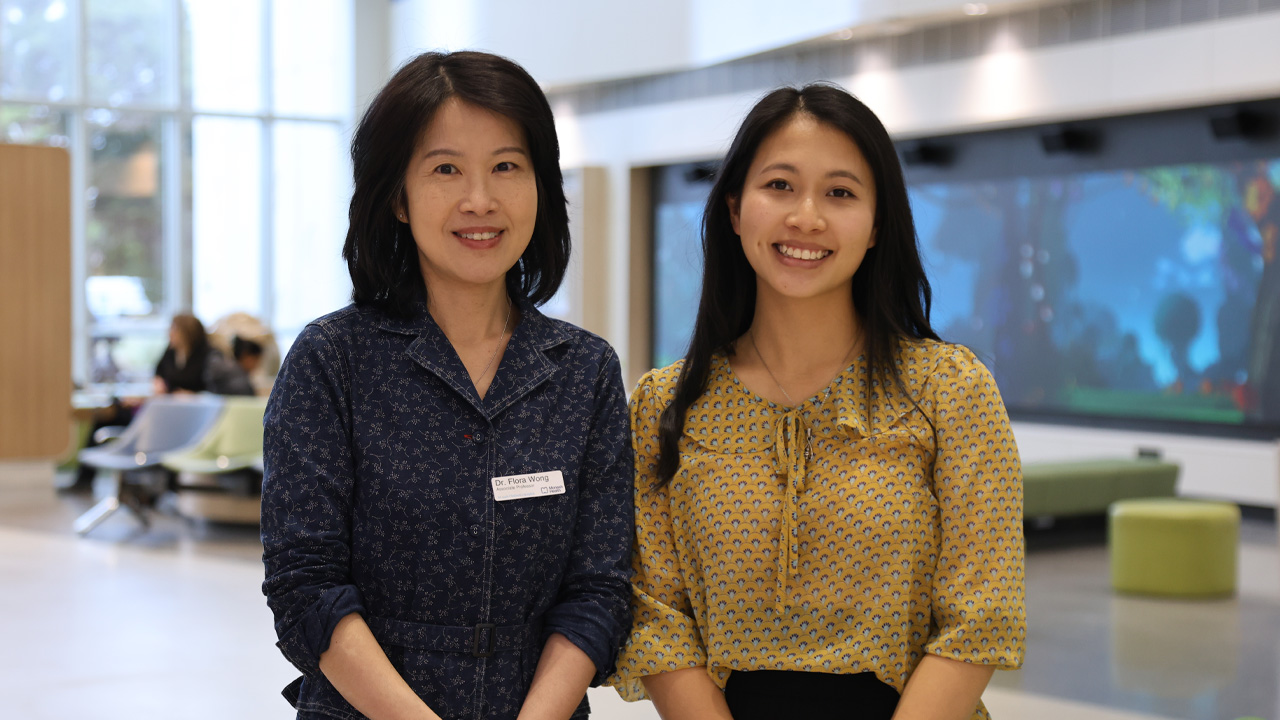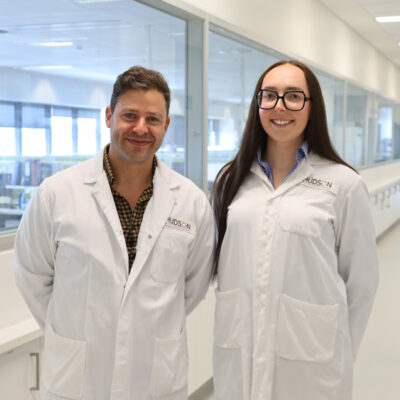Understanding the how and why of preterm brain injury
By Rob Clancy, staff writer. Reviewed by Associate Professor Flora Wong

Being born preterm is a known major risk factor for life-changing brain injury, but there is still a lot to understand about exactly what occurs inside these tiny babies that can do so much damage.
Researchers at Hudson Institute of Medical Research have now uncovered a key process that causes preterm brain injury, offering hope that new, targeted treatments could be created.
Dr Nhi Tran, postdoctoral scientist at the Ritchie Centre, and Associate Professor Flora Wong, Research Group Head at Hudson Institute and Monash University, and consultant neonatologist at Monash Children’s Hospital, led the study that looked at the effects of infection before birth (intrauterine inflammation) in the preterm brain, specifically at the intersection of neurons and brain blood vessels, termed the “neurovascular unit”.
They also assessed the cerebral effects of dopamine – a drug often used to treat low blood pressure, or hypotension, in preterm infants – and their findings have been published in the Journal of Neuroinflammation.
Risk of preterm brain injury
“Nearly 10 per cent of all newborns are born preterm, and the risk of preterm brain injury poses a major global health burden,” Dr Tran said. “A major contributor to preterm brain injury is a disruption of blood and oxygen supply to the brain.
“We found that the effects of intrauterine inflammation and dopamine on the neurovascular unit were very different – most notably, intrauterine inflammation leads to leaky or damaged blood vessels,” she said.
“On the other hand, dopamine administration was associated with vessel constriction, and dysregulation of the supporting cells (astrocytes and pericytes) that wrap around vessels and the surrounding neurons,” Dr Tran said.
Dr Nhi Tran, Associate Professor Flora Wong and the team believe that disruption of the neurovascular unit is a likely contributor to preterm brain injury and should be targeted in search of neuroprotective therapies.
Clinical insights into preterm brain injury
Dr Tran said that identification of these cellular and molecular processes that contribute to preterm injury provide clinicians with insights to the impacts of a common clinical condition and medical intervention on the preterm infant’s brain. These findings also highlight the need for more studies to assess other frequently used treatments in preterm infants, in order to inform best and safe clinical practices.
We’re aiming to understand the underlying mechanisms of preterm brain injury, with the goal to improve clinical treatments and reduce brain injury.” Dr Tran said.
Preterm birth facts
- A full-term pregnancy is between 38 and 41 weeks’ gestation.
- A preterm baby (born before 37 weeks) often has more health problems than a full-term baby.
- Globally, about 15 million babies – up to one in ten – are born preterm each year and this rate is increasing.
- In Australia, 8.6 per cent of babies are born preterm, but those rates are higher in mothers who smoke, in Indigenous and remote communities, as well as mothers aged under 20 and over 40
- The World Health Organization says that across 184 countries, the rate of preterm birth ranges from 5-18 per cent. In low-income settings, half the babies born at or below 32 weeks die, but in high-income countries, survivability is higher.
- Most preterm babies can develop normally but may be at increased risk of developmental problems. Long-term effects can include growth, movement, vision, hearing, social and emotional problems, cerebral palsy, language delays, dental problems, thinking and learning difficulties and chronic conditions such as asthma.
Collaborators | Department of Obstetrics and Gynaecology and Department of Paediatrics, Monash University. Australia Monash Newborn, Monash Medical Centre.
This research was supported by | Victorian Government’s Operational Infrastructure Support Program. NHMRC Career Development Fellowships Victor Yu Clinical Research Fellowship RACP Career Development Fellowship.
Journal | Journal of Neuroinflammation
Title | Intrauterine inflammation and postnatal intravenous dopamine alter the neurovascular unit in preterm newborn lambs
View publication | https://pubmed.ncbi.nlm.nih.gov/38807204/
In this article
About Hudson Institute
Hudson Institute’ s research programs deliver in three areas of medical need – inflammation, cancer, women’s and newborn health. More
Hudson News
Get the inside view on discoveries and patient stories
“Thank you Hudson Institute researchers. Your work brings such hope to all women with ovarian cancer knowing that potentially women in the future won't have to go through what we have!”






